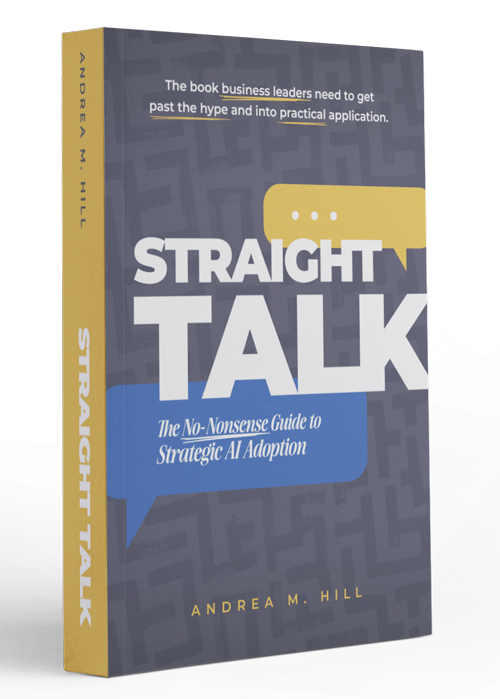Measuring Marketing Effectiveness in an Omnichannel World

You probably already know the importance of omnichannel sales and marketing. Knowing how to evaluate what works and what doesn’t, however, is a different story. If customers saw an ad online, followed it, and immediately bought the product advertised, things would be easy. But the typical customer journey follows a much more winding path. Customers shop around, visiting stores, engaging with social media, subscribing to email updates, reading reviews, reading your blogs and product descriptions, and checking out competitor websites before making a decision.
The sales cycle is even longer in B2B. In addition to all the digital touchpoints retail consumers interact with, B2B buyers also interact with salespeople in person, on the phone, and at conferences and trade shows. They read not only blogs and product reviews but white papers and case studies. When it comes time to buy, the purchasing decisions are often made by multiple stakeholders.
In both B2C and B2B marketing, gauging which channels in your omnichannel strategy are the most effective can be a challenge. Analytics can easily tell you where a customer journey started and where it ended—that last click before the sale—but what that information often leaves out is everything that happened in between. If you’re measuring the right KPIs and looking at the right data, you’ll have a clearer picture of the contributions all channels make to a sale, and a better idea of which channels are most effective and how multiple channels work together.
Omnichannel Strategy
To be effective, omnichannel marketing must be part of an overarching, campaign-focused marketing strategy. The teams or individuals working on your website, your social media, your traditional media, and your ads can’t all be doing their own thing. There has to be a unified brand message across all marketing channels and sales teams. No matter where customers find you, they’ll be able to recognize you, and when they encounter you across multiple channels, your brand message is reinforced.
A CRM Brings It All Together
When you run an omnichannel marketing strategy, you’re going to need a lot of data to determine which channels are most effective and which ones need more attention. Every social media app has its own analytics dashboard. You’ll also gather data from your website, from your in-person sales, from your PPC ads—anywhere a customer comes in contact with your business.
You will need a system that gathers all of this data in one place and tracks customer interactions between channels.
Tracking KPIs
Even with all that data in one place, you’ll need to know what to look for. The actual numbers will differ depending on a business’s goals, but there are certain benchmarks that any business should be tracking.
Conversion rates are some of the most important metrics you’ll track. A “conversion” can be a sale, but it doesn’t have to be—you can define a conversion as when a customer takes the action your marketing was designed for them to take. To get the fullest picture of the effectiveness of your omnichannel marketing strategy, map out the customer journey, tailor marketing content to each point of the customer journey, and define what a “conversion” means for each touchpoint. While the ultimate goal is to make a sale or convert a lead into a customer, there’s a lot that happens along the way.
For example, social media posts or blog posts designed for the discovery stage might not directly convert to sales, but they are doing their job if they are increasing brand awareness. Search volume, social media engagement, website page views, ranking in SERPs, and click-through rates for ads are all KPIs for discovery phase marketing.
As customers get closer to making a purchase, you can measure the success of your marketing campaigns by looking at cart abandonment rates, time spent on web pages, open and click-through rates on email campaigns.
B2B organizations should have a pipeline conversion tracking process in place. You’ll want to know how many leads turn into sales, and where in the pipeline you lose those who don’t convert.
Post-purchase, measure customer satisfaction through surveys, referral programs, product reviews and customer retention rates.
See the Big Picture Through Small Details
Most B2B businesses should aim for a 5:1 ROI in marketing; that is, the revenue generated by marketing should be five times the amount spent on marketing. Without collecting and integrating all of this data across the entire customer journey, you could end up with an inaccurate picture of your marketing efforts. Without clearly defined campaigns for each stage of the customer journey, it would be easy to conclude that only the touchpoint that led to the final sale contributed to the ROI. Measuring the effectiveness of omnichannel marketing lets you avoid the pitfalls of both undermining and overestimating your marketing efforts. That is, undermining effective channels by focusing only on the final step before purchase and overestimating the effectiveness of all of your marketing channels by lumping them all together without setting goals for each channel.
Andrea Hill's
Latest Book
Straight Talk
The No-Nonsense Guide to Strategic AI Adoption

Where other books focus on prompts and tools, this book gives business leaders what they actually need: the frameworks and confidence to lead AI adoption responsibly, without having to become technologists themselves.
Also available at independent booksellers and public libraries.
Are You Ready to Do Better Marketing?
WerxMarketing is all about performance marketing. That means giving you the tools you need to connect with customers, enable your sales efforts, and turn leads into loyal customers. Ready to learn more about how we do that? Book a free consult and bring your questions. See if you like working with us on our dime, and get some good advice in the process.